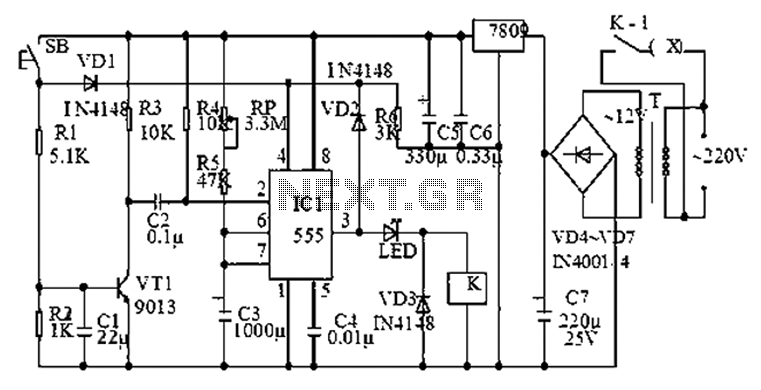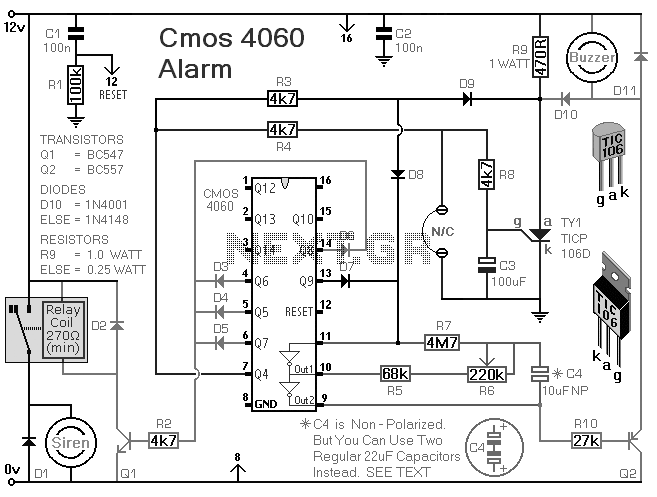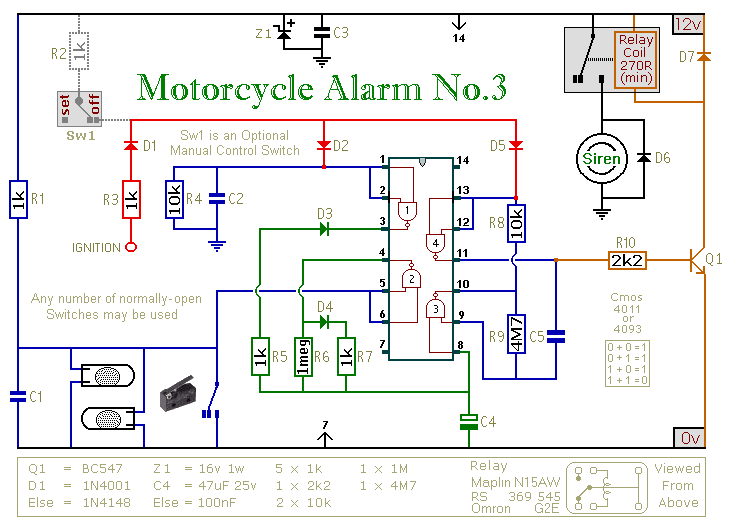
Cmos 555 astable generates square waves
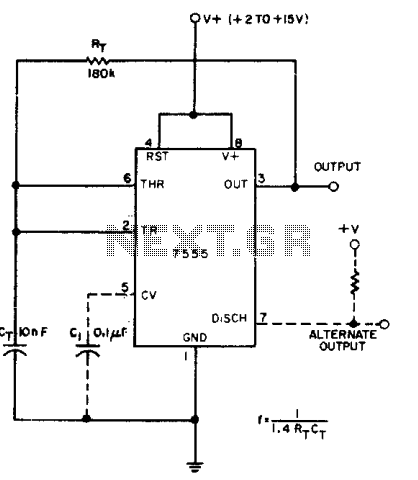
A CMOS timer generates true square waves because, unlike the bipolar 555, its output swings from rail to rail. The component values shown give a frequency of about 400 Hz.
The CMOS timer circuit operates by utilizing complementary metal-oxide-semiconductor technology to produce square wave signals with high precision. Its ability to swing from rail to rail means that the output voltage can reach the supply voltage levels, ensuring a full range of output states, which is particularly beneficial for digital applications.
In the described configuration, the timer's output frequency can be adjusted through the selection of external resistors and capacitors connected to the timing pins. The typical frequency of approximately 400 Hz indicates that the circuit is configured for moderate oscillation rates, making it suitable for applications such as flashing LED indicators or generating clock pulses for digital circuits.
The circuit typically includes two key components: a timing capacitor (C) and two resistors (R1 and R2) that set the charge and discharge times of the capacitor. The relationship between these components determines the frequency of oscillation according to the formula:
\[ f = \frac{1.44}{(R1 + 2R2) \cdot C} \]
This formula illustrates how variations in either resistance or capacitance will directly affect the output frequency. For instance, increasing R1 or R2 will result in a lower frequency, while increasing the value of C will also decrease the frequency. Conversely, decreasing these values will yield a higher frequency output.
The CMOS timer's design also minimizes power consumption compared to its bipolar counterpart, making it advantageous for battery-operated devices. The rail-to-rail output capability further enhances its versatility in interfacing with various logic levels, making it compatible with both TTL and CMOS logic families.
Overall, the CMOS timer is a robust choice for generating square wave signals in a wide range of electronic applications, providing reliable performance with adjustable frequency capabilities.A CMOS timer generates true square waves because, unlike the bipolar 555, its output swings from rail to rail. The component values shown give a frequency of about 400 Hz. 🔗 External reference
The CMOS timer circuit operates by utilizing complementary metal-oxide-semiconductor technology to produce square wave signals with high precision. Its ability to swing from rail to rail means that the output voltage can reach the supply voltage levels, ensuring a full range of output states, which is particularly beneficial for digital applications.
In the described configuration, the timer's output frequency can be adjusted through the selection of external resistors and capacitors connected to the timing pins. The typical frequency of approximately 400 Hz indicates that the circuit is configured for moderate oscillation rates, making it suitable for applications such as flashing LED indicators or generating clock pulses for digital circuits.
The circuit typically includes two key components: a timing capacitor (C) and two resistors (R1 and R2) that set the charge and discharge times of the capacitor. The relationship between these components determines the frequency of oscillation according to the formula:
\[ f = \frac{1.44}{(R1 + 2R2) \cdot C} \]
This formula illustrates how variations in either resistance or capacitance will directly affect the output frequency. For instance, increasing R1 or R2 will result in a lower frequency, while increasing the value of C will also decrease the frequency. Conversely, decreasing these values will yield a higher frequency output.
The CMOS timer's design also minimizes power consumption compared to its bipolar counterpart, making it advantageous for battery-operated devices. The rail-to-rail output capability further enhances its versatility in interfacing with various logic levels, making it compatible with both TTL and CMOS logic families.
Overall, the CMOS timer is a robust choice for generating square wave signals in a wide range of electronic applications, providing reliable performance with adjustable frequency capabilities.A CMOS timer generates true square waves because, unlike the bipolar 555, its output swings from rail to rail. The component values shown give a frequency of about 400 Hz. 🔗 External reference
Warning: include(partials/cookie-banner.php): Failed to open stream: Permission denied in /var/www/html/nextgr/view-circuit.php on line 713
Warning: include(): Failed opening 'partials/cookie-banner.php' for inclusion (include_path='.:/usr/share/php') in /var/www/html/nextgr/view-circuit.php on line 713
